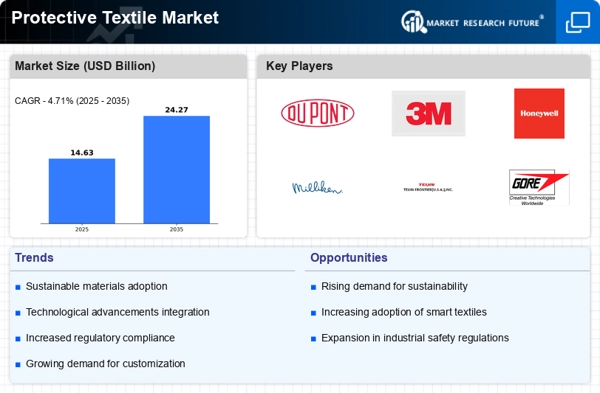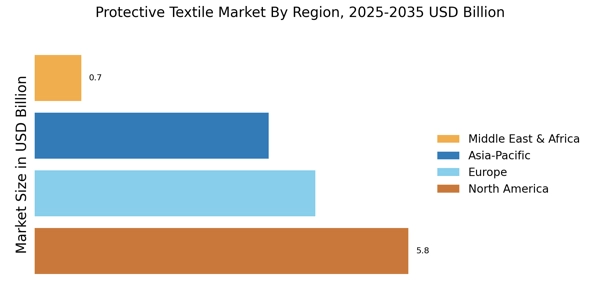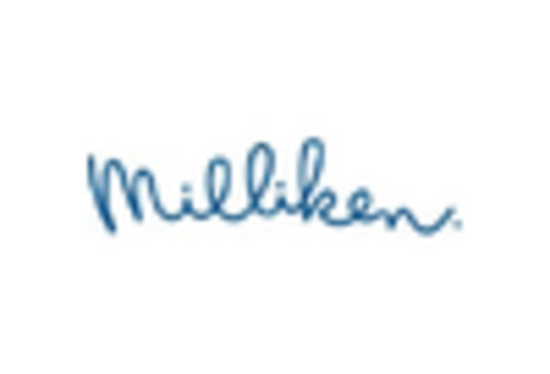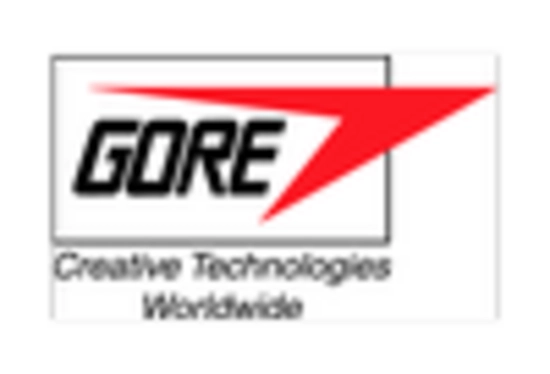Rising Awareness of Workplace Safety
There is a growing awareness regarding workplace safety, which is significantly influencing the Protective Textile Market. Organizations are increasingly recognizing the importance of providing protective gear to their employees to mitigate risks associated with hazardous environments. This heightened awareness is reflected in the implementation of stricter safety regulations and standards across multiple industries. For instance, the Occupational Safety and Health Administration (OSHA) has been actively promoting the use of personal protective equipment (PPE), which includes protective textiles. As a result, the market for protective clothing is projected to reach USD 10 billion by 2027, indicating a robust growth trajectory. This trend underscores the critical role that protective textiles play in ensuring safety and compliance, thereby propelling the Protective Textile Market.
Increasing Demand from End-User Industries
The Protective Textile Market is experiencing a notable surge in demand from various end-user sectors, including construction, healthcare, and military applications. As industries prioritize worker safety, the need for advanced protective textiles has escalated. For instance, the construction sector is projected to witness a growth rate of approximately 5% annually, driven by stringent safety regulations and the increasing number of construction projects. Similarly, the healthcare sector's demand for protective textiles, such as gowns and masks, is expected to rise significantly, reflecting a broader trend towards enhanced safety measures. This growing demand from diverse industries is likely to propel the Protective Textile Market forward, fostering innovation and the development of new materials that meet specific safety requirements.
Sustainability Trends in Textile Production
Sustainability is becoming a central theme in the Protective Textile Market, as consumers and manufacturers alike are increasingly prioritizing eco-friendly practices. The demand for sustainable materials, such as organic cotton and recycled polyester, is on the rise, driven by a growing consumer preference for environmentally responsible products. It is estimated that the market for sustainable textiles could reach USD 200 billion by 2025, reflecting a significant shift in consumer behavior. Manufacturers are responding by adopting greener production methods and investing in research to develop biodegradable and recyclable protective textiles. This focus on sustainability not only meets consumer expectations but also aligns with regulatory pressures aimed at reducing environmental impact, thereby influencing the trajectory of the Protective Textile Market.
Expansion of E-Commerce and Online Retail Channels
The expansion of e-commerce and online retail channels is transforming the way protective textiles are marketed and sold, thereby impacting the Protective Textile Market. With the increasing penetration of the internet and mobile devices, consumers are more inclined to purchase protective gear online. This shift is particularly evident in the rise of specialized online platforms that cater to specific industries, offering a wide range of protective textiles. It is projected that online sales of protective clothing could account for over 30% of total sales by 2026. This trend not only enhances accessibility for consumers but also allows manufacturers to reach a broader audience. As e-commerce continues to grow, it is likely to play a crucial role in shaping the dynamics of the Protective Textile Market.
Technological Innovations in Textile Manufacturing
Technological advancements in textile manufacturing are playing a pivotal role in shaping the Protective Textile Market. Innovations such as nanotechnology, smart textiles, and advanced weaving techniques are enhancing the performance characteristics of protective fabrics. For example, the integration of nanofibers can improve water resistance and breathability, making textiles more comfortable for users. The market for smart textiles, which can monitor environmental conditions and provide real-time feedback, is also gaining traction. It is estimated that the smart textile segment could grow at a compound annual growth rate of over 20% in the coming years. These technological innovations not only improve the functionality of protective textiles but also expand their applications across various sectors, thereby driving the Protective Textile Market.


















Leave a Comment